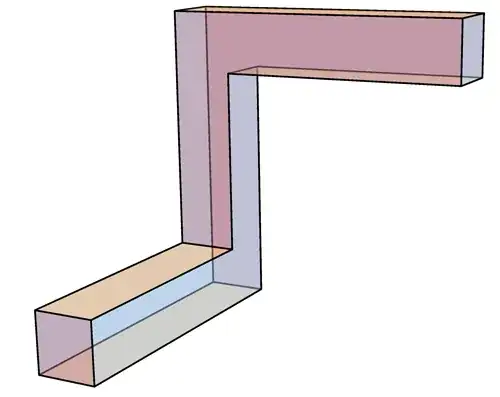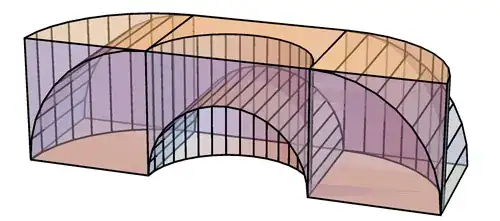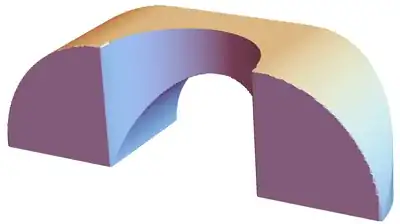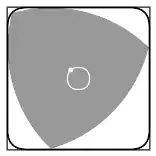What is the largest volume object that can pass though a $1 \times 1 \times L$ "snaky" corridor, where $L$ is large enough to be irrelvant, say $L > 6$.

This is a 3D version of the 2D sofa-moving problem, which has been heavily studied. See especially Dan Romik's web pages. The optimal-area 2D sofa is conjectured to be Gerver's (slight) modification of Hammersley's shape, the latter of which I show below, extruded in 3D to fill the corridor.

There are two natural candidates: (1) Slice the extruded 2D optimal shape, in the orthogonal direction, so it can negotiate both turns in the same manner. See image added below. (2) Rotate the illustrated shape $90^\circ$ but shear-off every portion that falls outside the $1 \times 1$ corridor.
A basic question is: Is either of these the optimal solution, or can one identify some shape that beats both? An even more basic (and easier) question is: Which of (1) or (2) has larger volume?
Added:

The intersection of the two shapes can pass through the corridor.

The intersection. (Thanks to J.M. & JackLaVigne @MathematicaSE.)
Volume: $\frac{4 \left(8+\pi^3\right)}{3 \pi ^3} \approx 1.67735$.

RegionMeasure[]function. I will have to go back to my calculations to see how I arrived at that expression. – Joseph O'Rourke Apr 15 '17 at 20:54